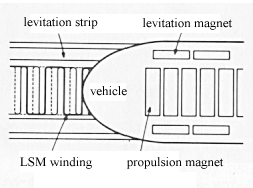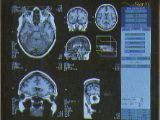Applications
Computers
The ability of a superconductor to store circulating indefinitely
can be used as the base of a computer memory unit. Circulating currents
can be stored in a porous evaporated film of tin or indium in a particular
spatial array symbolizing the binary digits 1 or 0. This device is called
the continuous film memory and it is being developed for possible superconducting
computers.
Transportation
In the transportations industry, a superconductor can
be used, as mentioned earlier, to create strong magnetic fields than can
produce the effect of levitation. Maglev trains, using superconductors that
generate magnetic fields, hover above the track during operation. This results
in the obtainment of very high speeds (500mph) with the consumption of very
little energy. The material made for making the tracks must be kept at 4K
so liquid helium is usually used to keep the material at the necessary low
temperatures.
Medical Industry

Magnetic Resonance Imaging (MRI) equipment, used for
diagnostic scanning procedures, utilizes strong magnetic coils. Electromagnets
made with superconductors surround the chamber to produce a large magnetic
field in order to cause hydrogen nuclei in the patient's body tissue to line
up in the direction of the magnetic field. The electromagnets, which consist
of wire coils, must carry very large electrical currents without melting
in order to produce very large induced magnetic fields. Superconductors are
used because they can carry large currents without generating heat that would
melt other materials. Superconductive magnetic coils are an important portion
of this whole-body scanner. Since these coils are capable of producing very
stable, large magnetic field strengths, they generate high quality images.
Currently, low temperature superconductors are employed in these coils, but
the eventual use of HTS materials will greatly enhance the cost-benefit aspect
of the application.



